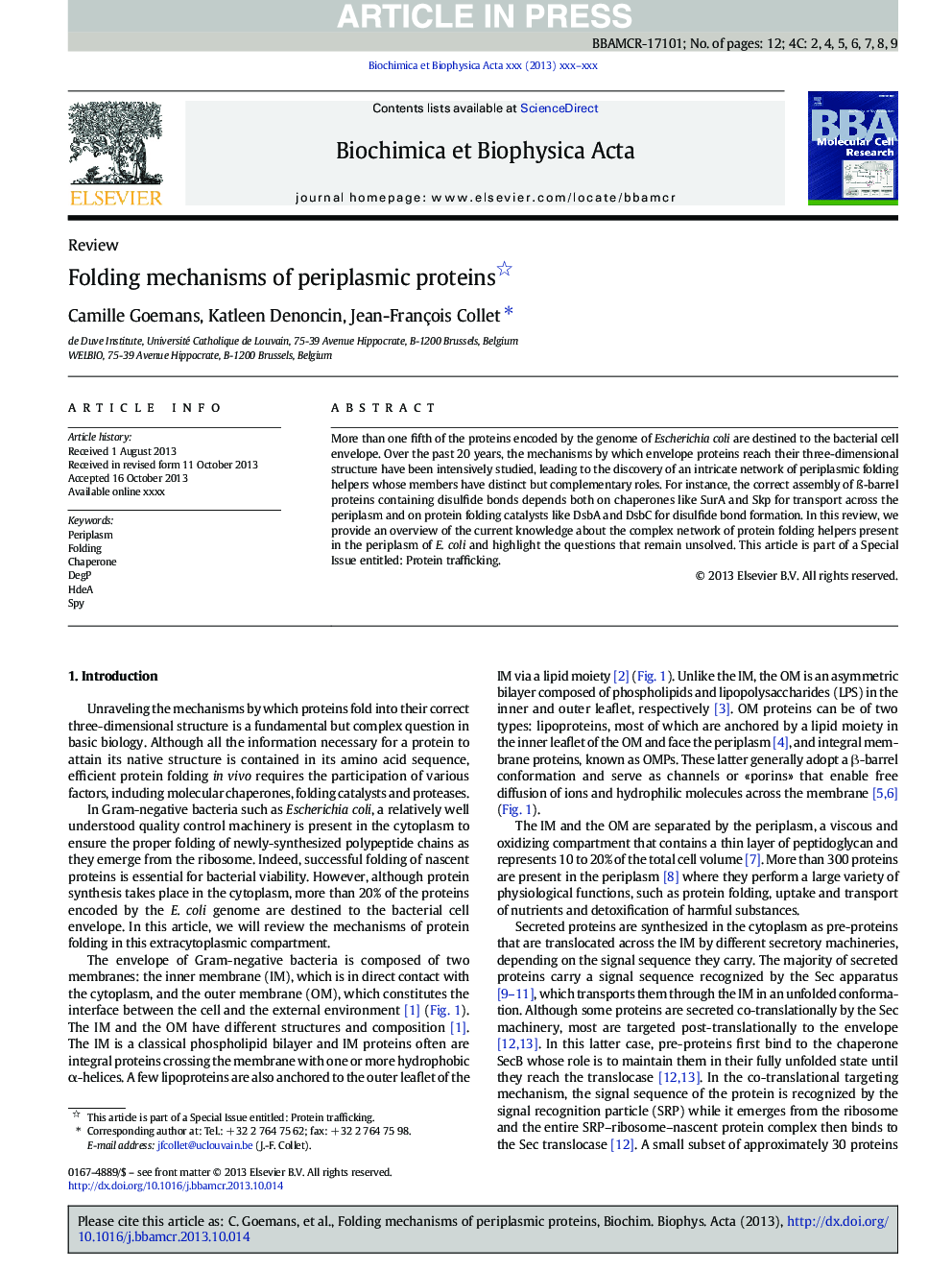| Article ID | Journal | Published Year | Pages | File Type |
|---|---|---|---|---|
| 10802131 | Biochimica et Biophysica Acta (BBA) - Molecular Cell Research | 2014 | 12 Pages |
Abstract
More than one fifth of the proteins encoded by the genome of Escherichia coli are destined to the bacterial cell envelope. Over the past 20Â years, the mechanisms by which envelope proteins reach their three-dimensional structure have been intensively studied, leading to the discovery of an intricate network of periplasmic folding helpers whose members have distinct but complementary roles. For instance, the correct assembly of Ã-barrel proteins containing disulfide bonds depends both on chaperones like SurA and Skp for transport across the periplasm and on protein folding catalysts like DsbA and DsbC for disulfide bond formation. In this review, we provide an overview of the current knowledge about the complex network of protein folding helpers present in the periplasm of E. coli and highlight the questions that remain unsolved. This article is part of a Special Issue entitled: Protein trafficking and secretion in bacteria. Guest Editors: Anastassios Economou and Ross Dalbey.
Related Topics
Life Sciences
Biochemistry, Genetics and Molecular Biology
Biochemistry
Authors
Camille Goemans, Katleen Denoncin, Jean-François Collet,
